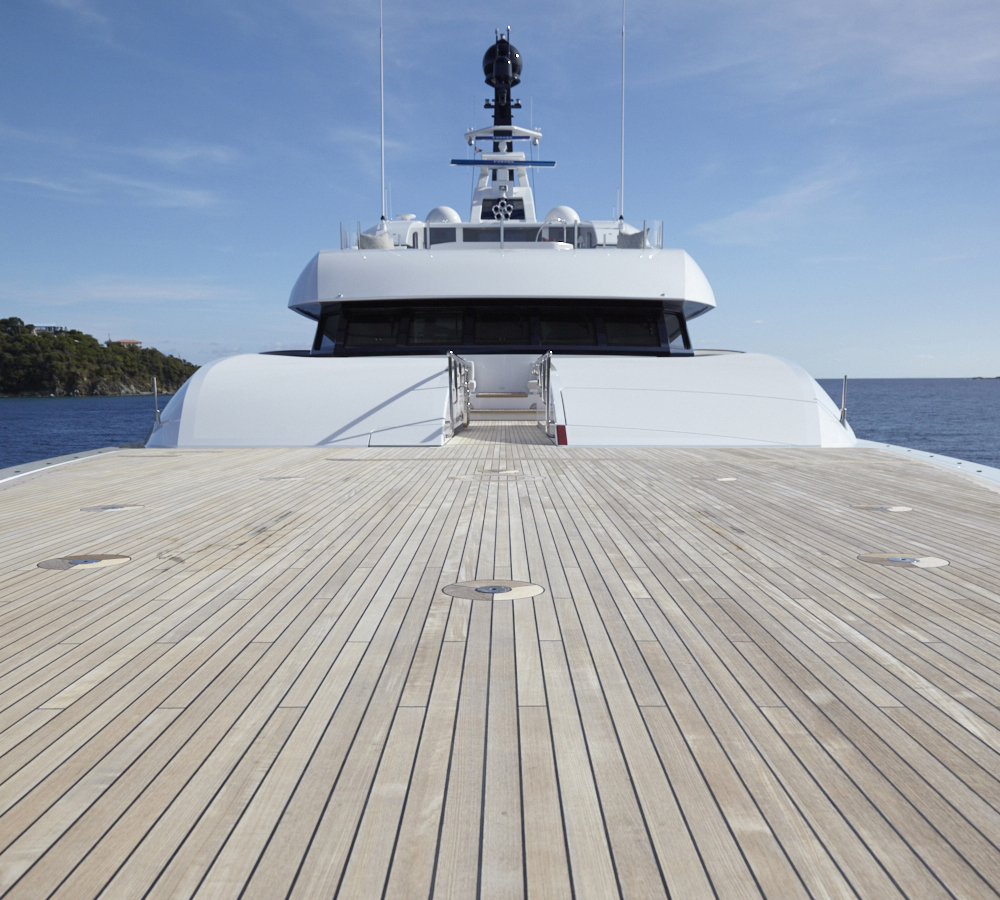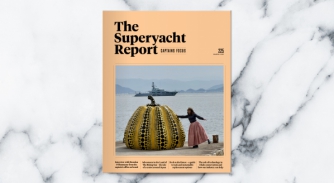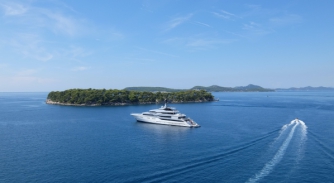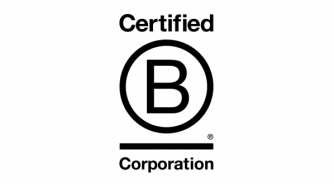Deck to the future!
A deep dive into the drive to replace the endangered-teak supply chain with upcoming deck materials that are fast becoming the sustainable replacement options…

Image courtesy of Feadship
Let’s be honest, there is a timelessness to teak and a reason why it’s endured. Its sleek, golden honey-brown grain has become synonymous with what we consider a yacht is supposed to look like. It’s tactile, elegant and instantly recognisable, even as it fades into a weathered silvery grey before being sanded down and returned to glorious gold. For many owners, it is non-negotiable. But the world has changed and our attitudes towards teak are changing with it.
Teak’s aesthetic legacy comes at a cost. In recent years, it has become one of the most contentious materials in construction, not just for its scarcity, but for where it comes from, how it’s managed and harvested and the shadow it casts over an industry facing growing scrutiny.
To combat rampant deforestation and illegal trade, the EU banned the import of Myanmar teak in 2021. While this has affected the supply chain, it has done little to quell demand, impacting natural forests in other countries like Thailand, India and Indonesia. So, in response, international regulatory pressure is mounting, as is the urgency to adapt. Several shipyards have already faced legal penalties for sourcing violations, and the risks, both reputational and financial, are only set to increase.
Myanmar’s dominance in the teak supply chain compounds the issue. According to the Environmental Investigation Agency (EIA), 75 per cent of the teak logged in the country is believed to be illegal and around 40 per cent of its exports go into yacht construction. Traceability remains a minefield and even so-called pre-ban teak risks falling foul of new European deforestation regulations and the Corporate Sustainability Reporting Directive (CSRD).
Now, the issue is systemic, with large yachts driving this unsustainable demand. Despite making up just 15 per cent of the global fleet, yachts over 60 metres account for over half of total teak consumption. In the 90-metre-plus category, a single yacht can require close to half a cubic metre of teak per metre of length. As this cohort nears its first major refit cycle, analysts at Superyacht Intelligence forecast a sharp surge in demand, with a spike expected by 2028 and a projected peak of around 3,000 cubic metres annually by 2048, roughly double today’s requirement.
Clearly, this is unsustainable. For shipyards, designers and clients alike, the reputational and regulatory risks are too severe to ignore. While old-growth teak may remain the aesthetic and operational ideal, for most, its legal and ecological long-term viability is out of the question. According to Water Revolution Foundation, the archetypal issue is as much mindset as it is with the materials themselves.
“The topic of teak has always been present within community resource use,” explains Awwal Idris, environmental expert at Water Revolution Foundation (WRF). “If you look at indigenous communities, you learn the ecosystem benefits these types of old-growth forests provide. Communities depend on it for all kinds of resources, whether water regulation or preventing floods when natural disasters occur.”
Teak extraction diminishes forests’ ability to absorb carbon dioxide, exacerbating climate change. With deforestation and forest degradation contributing nearly 10 per cent of global greenhouse gas emissions, the demand for teak is a global concern. But it also has bleak implications on a local level, both environmentally and economically, stretching far beyond supply chains. “If you look at the teak that is coming from Myanmar, there is a political aspect of it, where the money that comes from that supply chain is used to fund all kinds of military operations and brutal campaigns in the country,” adds Idris.
Despite this, Idris believes the industry has yet to demonstrate any sense of urgency. “We’re starting to see more awareness around the environmental impacts, like deforestation, biodiversity loss and emissions. But a lot of the momentum still comes from regulatory pressure. Even with bans in place, there’s some hesitation around shifting to alternatives, which shows we still have work to do to fully embrace the change that’s needed,” he explains.
“I’m not sure the industry feels the urgency yet, and maybe that’s because the impacts don’t feel immediate. When the damage happens far away, it can seem abstract, just numbers on a page. But for those of us who’ve been involved in community conservation, we’ve seen the effects first-hand. It’s not theoretical, it’s very real.”
“There are a lot of excuses. Many people still think teak is a renewable resource and that [when regulations loosen or restrictions are lifted] it will just become available again.”
For WRF co-founder and executive director Robert van Tol, a large portion of the problem lies in how the conversation is framed. “We try to approach yachting from an environmental point of view rather than approach the environment from a yachting point of view. If you approach it from a yachting point of view, you might get stuck and your options are limited. But if you re-think yachting from an environmental point of view, you have much more creativity and freedom to come up with alternatives.”
This shift, he argues, must be cultural as well as material. Yachting can be such a bubble, we need to burst that bubble occasionally to test the barometer and see where we are within society. We are all citizens of a planet with limited resources. We need to face any damage we do and take responsibility. Currently, yachting contributes to climate change and ocean degradation, while we are in a strategic position to innovate to mitigate this and make further contributions to end up nature-positive. That’s what Water Revolution Foundation was founded for in 2018.
This isn’t exactly a convenient topic. People often talk about legality before they talk about environmental impact. And, of course, teak alternatives are being marketed in the industry, and often, you only find out what works by trial and error.
“Many shipyards are doing their own field testing, but shouldn’t they share their findings? If the industry shares results, we can identify which additional tests are needed and start building a collective approach to decking, not just individual company strategies as if it is a competitive advantage,” continues Van Tol. “The worst thing we can do is send mixed messages to clients. For some reason, decking materials, and teak especially, are incredibly emotional topics for owners and their teams. If we don’t have a common solution and everyone is offering something else, we create confusion and lose credibility. That doesn’t help anyone.”
There is a prevailing argument that yachting is a risk-averse industry. The stakes are high, so the safer path to follow is known and proven rather than something new and potentially exposed. But if 80 per cent of a yacht’s lifetime impact is decided at the design stage, as Water Revolution Foundation claims, the earlier and the more aligned you can be on alternatives, the more constructive that conversation with clients can be.
“And beyond being risk-averse, I think part of the issue is that the yachting community is so customer-driven,” says Idris. “We use a full life cycle approach to show how material choices affect environmental impact. For example, we’ve looked at plantation teak. When legally sourced and certified, it can offer a lower-impact alternative to old-growth teak, especially if land-use change and traceability are managed properly.”
He continues: “We also evaluate high-quality composite materials and while some carry a stigma of being ‘plastic’, they can have a much lower environmental footprint across the lifecycle – especially when they’re durable, low-maintenance, and manufactured using less energy, recycled or biobased content. Still, even with this data, we often hear: ‘Yeah, but my customers want real teak.’ There’s a perception gap. Some still assume teak is endlessly renewable or that once restrictions ease, it’ll be business as usual again. That mindset makes the shift harder.”
While the regulations are doing their part, yachting can go beyond regulation. There is no obligation to sit and wait for the rules to change. An industry that constantly boasts about innovation remains awash in a plague of scepticism regarding something as fundamental as decking.
“We need a transformative approach. By now, it should be clear that using materials with known environmental harm isn’t acceptable,” Idris adds. “We’re in a new era, and the industry has an opportunity to lead by example, making choices that respect both the environment and future generations. Luxury and responsibility shouldn’t be seen as opposites.”
But it isn’t all doom and gloom. While the teak conversation remains sensitive and solutions are still fragmented, there are signs of movement. Slow, perhaps, but growing.
It’s heading in a positive direction because the quest for alternatives is finally gaining traction. The challenge now is less about explaining why change is needed and more about working out how to do it in trusted, tested and scalable ways.
From engineered scarf joints that extend shorter planks to full-scale trials with cork, composites and certified plantation timber, innovation is happening in real-time. Yards and suppliers have been experimenting for over a decade in anticipation of design, regulation and demand shifts. There’s no silver bullet. At least not yet. But the search is very much underway.
As part of News Editor Conor Feasey’s deep dive into the thorny topic of teak, he spoke with three of the top suppliers about the alternative deck materials that offer all the properties owners are looking for while being both ethical and sustainable. Their responses are being published in three parts and will follow in the coming days.
This article first appeared in The Superyacht Report – Captains Focus. With our open-source policy, it is available to all by following this link, so read and download the latest issue and any of our previous issues in our library.
Profile links
NEW: Sign up for SuperyachtNewsweek!
Get the latest weekly news, in-depth reports, intelligence, and strategic insights, delivered directly from The Superyacht Group's editors and market analysts.
Stay at the forefront of the superyacht industry with SuperyachtNewsweek
Click here to become part of The Superyacht Group community, and join us in our mission to make this industry accessible to all, and prosperous for the long-term. We are offering access to the superyacht industry’s most comprehensive and longstanding archive of business-critical information, as well as a comprehensive, real-time superyacht fleet database, for just £10 per month, because we are One Industry with One Mission. Sign up here.
Related news

The Superyacht Report 225: Captains Focus – out now!
Real stories from the helm on leadership, operations, culture and life at sea hot off the press. Get your digital copy of TSR 225 here
Opinion

Water Revolution Foundation announces Roadmap 2050
Quantified environmental targets set for a yacht’s life cycle to reach net zero by 2050
Crew

Don’t wait – lead
EU sustainability rules are changing – Water Revolution Foundation outlines what this means for yachting
Business

Sustainability leadership at Azimut|Benetti
The number one builder takes an important step towards reducing our industry’s impact
Business

To B Corp or not to B
Sustainability Editor Megan Hickling explores how companies like RWD are achieving meaningful sustainability solutions through B Corp accreditation
Business
Related news
The Superyacht Report 225: Captains Focus – out now!
6 months ago
Water Revolution Foundation announces Roadmap 2050
7 months ago
Don’t wait – lead
10 months ago
Sustainability leadership at Azimut|Benetti
10 months ago
To B Corp or not to B
11 months ago
NEW: Sign up for
SuperyachtNewsweek!
Get the latest weekly news, in-depth reports, intelligence, and strategic insights, delivered directly from The Superyacht Group's editors and market analysts.
Stay at the forefront of the superyacht industry with SuperyachtNewsweek



